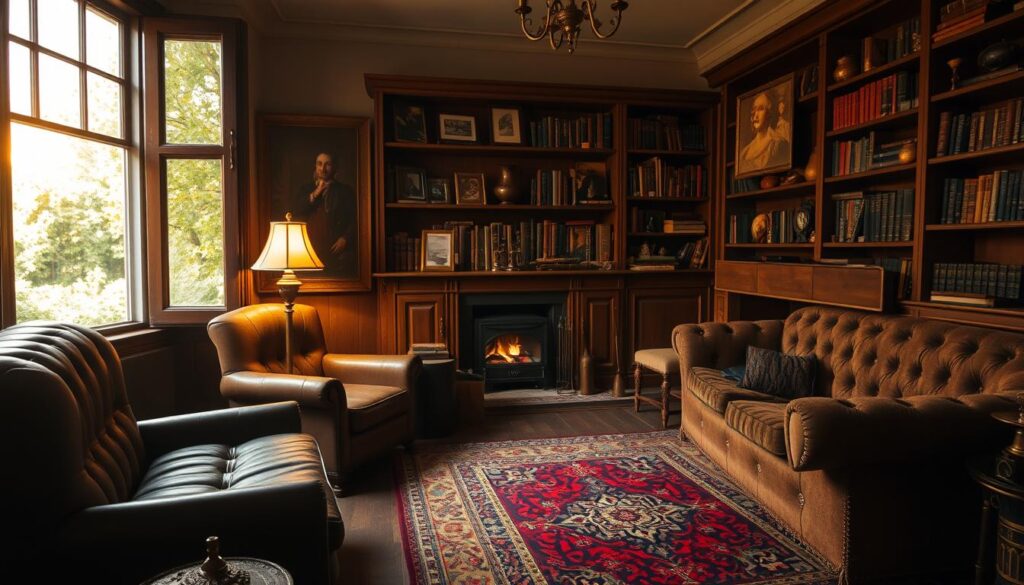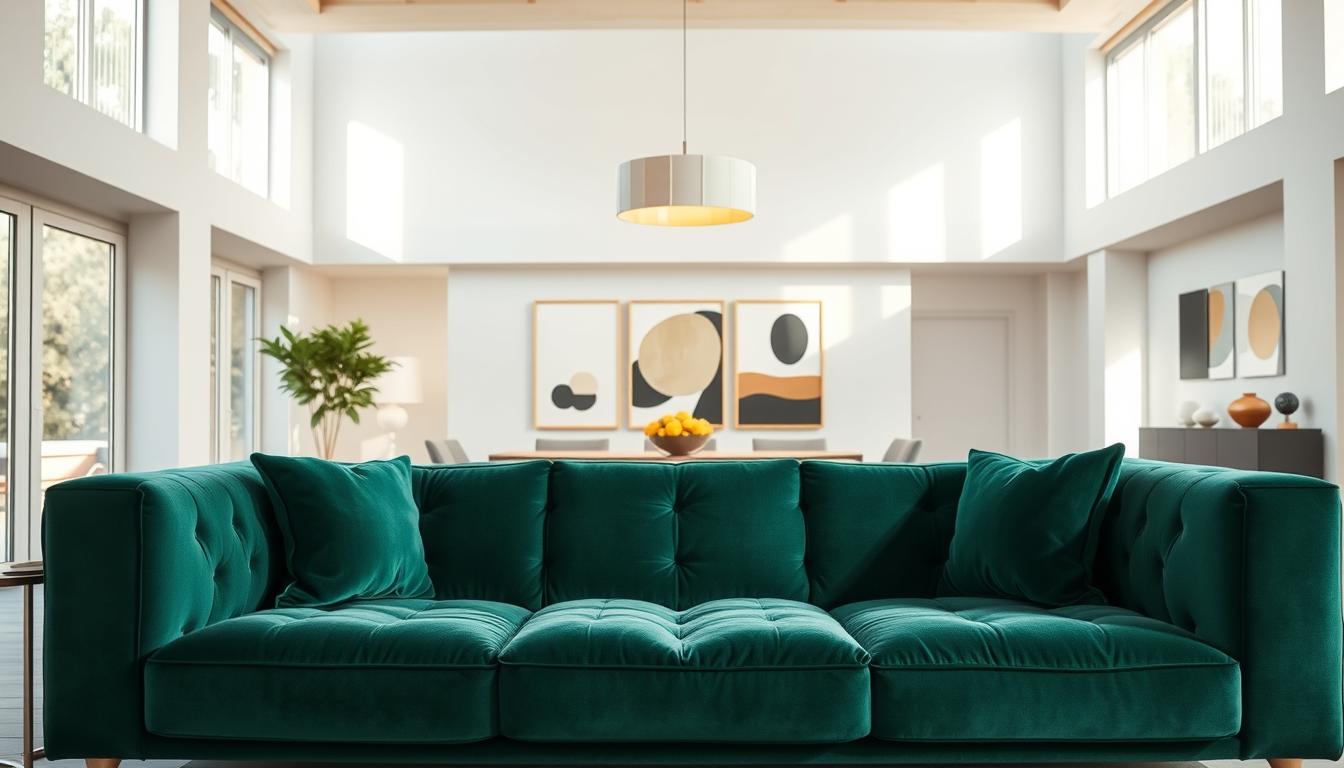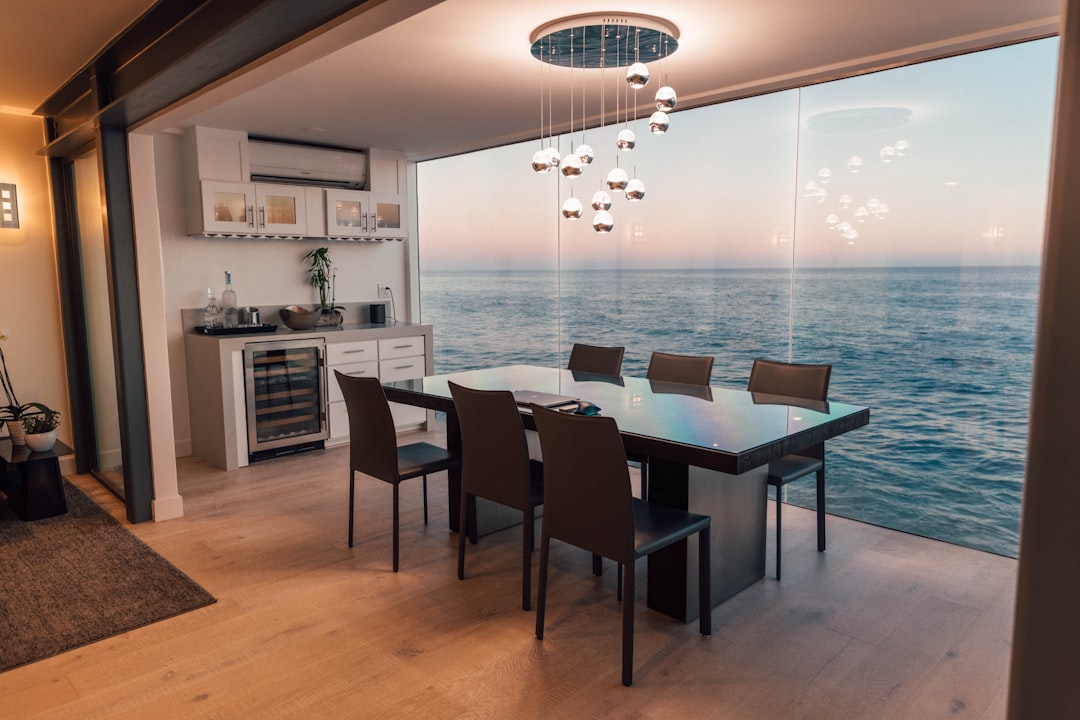The world of home decor is always changing. Over 75% of homeowners want to update their homes in the next year. We’re excited to share the top interior design trends that are making waves.
These trends include embracing minimalism and adding smart home tech. They focus on making your space both stunning and practical. We’ll show you the most sought-after styles to turn your home into a cozy, elegant retreat.
As we explore these trends, you’ll learn how to upgrade your home with the latest design trends.
Key Takeaways
- Top interior design trends for the current year
- How to incorporate minimalism into your home decor
- The role of smart home technology in modern design
- Popular styles for transforming your living space
- Tips for creating a beautiful and functional home
Embracing Minimalism: A Clean Slate for Modern Spaces
Minimalism is more than a design trend; it’s a lifestyle that values simplicity and function. It shines in the world of interior design, offering elegance and calm, clutter-free spaces.
The Beauty of Simplicity
Simplicity brings relaxation and clarity. It removes clutter and focuses on clean lines, making our homes calm. This design is not just pretty; it also makes spaces more functional and enjoyable.
Minimalist design puts function over form. This means every item has a purpose, cutting down on clutter and bringing peace.
Key Minimalist Elements
What makes up minimalist design? It starts with a neutral color palette. White, gray, and beige are common, creating a clean look.
- Minimal ornamentation
- Clean lines and simple shapes
- An emphasis on functionality
- A limited color palette
These elements make a space feel open and uncluttered. By using them, you can create a minimalist style that’s both stylish and peaceful.
How to Achieve a Minimalist Look
To get a minimalist look, start by decluttering. Remove items that don’t serve a purpose. Then, choose furniture and decor with clean lines and simple shapes.
Think about your space’s layout for better function. In today’s design trends, the goal is a natural, effortless flow. This might mean rearranging furniture for a more open feel.
Embracing minimalism turns your home into a calm, serene, and stylish space. It’s all about keeping things simple, functional, and focused on the essentials.
Biophilic Design: Bringing Nature Indoors
In today’s fast-paced world, biophilic design offers a welcome break. It reconnects us with nature. This trend brings elements of nature into our homes and workplaces, boosting our health and productivity.
Benefits of Biophilic Elements
Biophilic elements help us relax, breathe better air, and work better. They make our spaces calmer and more healing. Natural light, plants, and materials are key to achieving this.
Being around nature improves our mood and energy. For example, natural light helps our bodies keep a healthy rhythm. This leads to better sleep and health.
Incorporating Plants into Interior Spaces
Plants are a great way to add biophilic touches to our spaces. They clean the air and make our areas look beautiful. When picking plants, think about the light they need, how easy they are to care for, and their benefits, like cleaning the air or reducing stress.
- Snake plants for low-maintenance air purification
- Peace lilies for their elegant white blooms and air-purifying properties
- Spider plants for easy propagation and hanging baskets
Natural Materials to Consider
Using natural materials in our design also enhances the biophilic feel. Reclaimed wood, bamboo, and stone add texture and warmth. They also show our commitment to sustainability and our connection to the earth.
When picking natural materials, think about their durability, upkeep, and how they fit with your design. Aim for a balance between nature and our built world.
Bold Colors and Patterns: Making a Statement
Bold colors and patterns are changing interior design. They offer a fresh way to make your space unique. Whether it’s one room or your whole home, bold elements can really stand out. We’ll look at how to use bold colors and patterns to show off your style.
The Power of Accent Walls
An accent wall can change a room with a splash of color or texture. It’s a simple way to add boldness to your space.
To make an accent wall, pick a wall that grabs attention, like behind a bed or sofa. Choose a paint color or wallpaper that stands out against the rest. Remember the 60-30-10 rule: 60% of the room should be a main color, 30% a secondary, and 10% an accent.
Trendy Color Palettes for 2023
This year, bold and vibrant color palettes are in. From deep jewel tones to soft pastels, there’s something for everyone.
| Color Palette | Description |
|---|---|
| Jewel Tones | Emerald green, sapphire blue, and ruby red create a luxurious and sophisticated atmosphere. |
| Soft Pastels | Soft pink, baby blue, and mint green offer a calming and serene ambiance. |
| Bold Brights | Bright yellow, orange, and coral add a fun and energetic vibe to any room. |
Mixing and Matching Patterns Successfully
Mixing patterns can seem scary, but with a few tips, you can create a beautiful space.
Begin with a main pattern and add secondary ones that match it. Think about the scale and texture of the patterns. Mixing different scales and textures adds depth and interest. For example, pair a big floral pattern with a small geometric one.
Sustainable Design: Eco-Friendly Trends
As we aim for a greener future, sustainable design is key in modern interior trends. It’s about cutting down our ecological impact and making homes that are both stunning and green.
Materials That Matter
The right materials are essential in sustainable design. We’re seeing more use of recycled and upcycled materials. These choices cut down waste and lessen the demand for new resources. Some top picks include:
- Bamboo flooring
- Reclaimed wood
- Low-VOC paints
- Recycled glass countertops
These materials help make our homes healthier and add a special touch.
Energy Efficiency in Design
Energy efficiency is vital in sustainable design. Using energy-efficient appliances and smart home tech can greatly cut down energy use. Some smart moves include:
- Installing LED lighting
- Using smart thermostats
- Investing in energy-efficient windows
- Optimizing insulation
These steps not only save on bills but also help our planet.
Sustainable Practices for Everyday Living
Sustainable design goes beyond materials and tech. It’s also about adopting sustainable practices in our daily lives. Simple actions like saving water, using green cleaners, and recycling can have big effects. We can also try:
- Composting
- Using reusable products
- Conserving energy
By making these habits part of our daily lives, we can live more sustainably and care for our planet.
Smart Home Technology: Integrating Innovation
Smart home technology is changing our homes. It makes them more efficient, comfortable, and connected. As we follow the latest interior design trends, smart tech is key for many homeowners.
Must-Have Gadgets for Our Homes
Smart home tech includes many devices to simplify our lives. Some essential gadgets are:
- Voice-controlled assistants like Amazon Alexa or Google Home
- Smart thermostats that learn our temperature preferences
- Smart lighting systems that can be controlled remotely
- Home security systems with smart door locks and cameras
These gadgets improve our homes’ functionality. They also make our living spaces more sustainable and secure.
Designing for Functionality and Style
It’s important to mix smart tech with style. Here are some tips:
- Choose devices that match your home’s look.
- Make sure the user interface is easy to use.
- Think about where to place devices for the best use.
This way, we can have a smart home that looks great and works well.
The Future of Smart Interiors
The future of smart home tech is promising. Advances in AI and IoT will lead the way. We can look forward to even more connected and automated homes.
| Technology | Current Application | Future Potential |
|---|---|---|
| AI-powered assistants | Voice control, smart home management | Predictive maintenance, personalized experiences |
| Smart home security | Remote monitoring, smart locks | Advanced threat detection, integrated emergency response |
| Energy management | Smart thermostats, energy monitoring | Automated energy optimization, grid integration |
As smart home tech evolves, it will be more central to interior design’s future.
Vintage Revival: Nostalgic Design Trends
Vintage design is back in style, and we’re excited to dive into its influence on today’s interiors. It adds warmth and character to our homes, making them stand out.

Key Vintage Pieces to Incorporate
To bring vintage charm into your home, start with key pieces. Antique furniture is a fantastic choice, offering history and elegance. Look for items with detailed craftsmanship, like ornate wooden chairs or plush vintage sofas.
Adding vintage decor is another great way to enhance your space. Think vintage posters, antique clocks, and retro lighting. These items add depth and interest.
Blending Modern and Vintage Styles
Mixing modern and vintage styles can be tricky, but it’s doable. Begin by combining a vintage piece with something modern, like a sleek sofa or contemporary art. This mix creates a visually appealing contrast.
For instance, pair a vintage armchair with a modern coffee table. Or hang vintage curtains next to modern windows. The goal is to find harmony between styles, letting each piece shine.
Finding Vintage Inspirations in Design
Discovering vintage inspirations is easy. Just flip through design magazines or browse online. Seek out pieces that match your style, mixing different eras and styles freely.
Exploring antique stores, flea markets, or vintage shops is also rewarding. Look for items with quality craftsmanship and timeless designs. These pieces will last for years to come.
Multifunctional Spaces: Maximizing Usable Areas
Homes are getting smaller, making multifunctional spaces more important. Today’s interior design focuses on making the most of every inch. This is key for homes that are both beautiful and practical.
Creative Layout Ideas for Small Homes
Small homes need creative layouts to make the most of their space. Using open floor plans is a smart move. It makes rooms feel bigger by removing walls.
Don’t forget about vertical space. Loft areas, tall shelves, and storage that goes up can make a room seem larger. It’s all about creating a sense of height.
- Choose furniture that does double duty, like a storage ottoman or a coffee table with storage.
- Place mirrors to reflect light and make rooms appear bigger.
- Stick to light colors to expand the feel of your space.
Furniture That Serves Double Duty
Furniture that does more than one thing is essential in multifunctional spaces. A sofa bed can be a place to sit and a bed for guests. A storage coffee table keeps your living room tidy.
- Get a murphy bed or wall bed to save floor space.
- Look for a dining table that can also be a desk or workspace.
- Use nesting tables that can be tucked away when not needed.
Zone Design for Open Areas
In open-plan living, setting up different zones is crucial. Use area rugs, varied lighting, or furniture arrangement to create these zones. This helps define each area within the larger space.
For example, a living area can have a sectional sofa and coffee table. A desk or workspace nearby can be your home office.
- Lighting can help define zones, like brighter lights over a dining area.
- Arrange furniture to create separate areas in an open plan.
- Consider using room dividers or screens to separate zones when needed.
Artisanal Touch: Unique Handmade Elements
Embracing the top interior design trends, the artisanal touch stands out. It personalizes our homes with a unique touch. Handmade elements add character that mass-produced items can’t match.
Choosing handmade over machine-made supports local artisans and craftspeople. This choice preserves traditional crafts and helps these skilled individuals.
Supporting Local Artisans
Supporting local artisans enriches our homes with unique pieces. It also plays a crucial role in sustaining local economies and cultural heritage. By choosing artisanal products, we invest in the community and keep traditional craftsmanship alive.
To find local artisans, visit local craft fairs, antique markets, or studios. Many artisans also have an online presence, making it easier to discover and purchase their work.
Showcasing Handmade Decor
Showcasing handmade decor requires a thoughtful approach. Here are a few tips to make your artisanal pieces shine:
- Use lighting to highlight the textures and details of handmade items.
- Group similar items together to create a cohesive look.
- Balance your artisanal pieces with more minimalist elements to avoid overwhelming the space.
Customizing Your Space with Artisanal Goods
Customizing your space with artisanal goods lets you infuse your personality into your home. Whether it’s a handmade vase, a custom piece of furniture, or artisanal textiles, these elements make your space unique.
Consider commissioning a piece or customizing an existing item to fit your design vision perfectly. This ensures the piece is one-of-a-kind and lets you be involved in the creative process.
| Artisanal Element | Design Impact | Customization Potential |
|---|---|---|
| Handmade Furniture | Unique, statement pieces that add character to a room. | High – can be commissioned to fit specific dimensions or design preferences. |
| Artisanal Textiles | Bring warmth and texture to a space, can be used in upholstery, curtains, or as throw blankets. | Medium – can be customized in terms of color, pattern, and size. |
| Handmade Decor | Adds a personal touch, can be used to create a focal point in a room. | High – often one-of-a-kind or can be customized to fit a specific theme or style. |
By embracing artisanal interior design trends, we enhance our homes’ beauty. We also contribute to a more sustainable and culturally rich environment.
Textures and Layers: Adding Depth and Warmth
Textures and layers are key in the latest interior design trends. They add depth and warmth to our spaces. Using different textures can make a room feel more inviting and cozy.
Adding various textures and layers is more than just looks. It’s about creating a feel-good experience. Mixing materials and fabrics adds complexity and interest to our homes.
Popular Textures for 2023
This year, some textures are becoming more popular. They can give our homes a unique touch. Here are a few:
- Natural fibers like jute and sisal
- Soft, plush throw blankets
- Velvet and linen fabrics
- Rough-hewn wood and stone
These textures can be used in furniture, rugs, and accessories.
Layering Fabrics: Tips and Tricks
Layering fabrics is an art that adds depth and interest. Start with a base layer, like a sofa. Then add throw blankets and pillows. Mix different textures and patterns for a cohesive yet dynamic look.
For example, a velvet sofa with a chunky throw and patterned pillows creates a cozy atmosphere.
The Role of Textures in Design Harmony
Textures are vital for design harmony. Balancing them creates cohesion and visual flow. Mixing rough textures like wood with smooth ones like glass or metal is key.
Success in texture mixing comes from finding a balance. This way, our space feels layered yet harmonious.
Personalization: Creating Unique Spaces
Exploring modern interior design trends shows us how important personalization is. It makes spaces truly our own. We’ll look into why personalization matters in interior design.
Incorporating Personal Mementos
Adding personal mementos to our spaces is very meaningful. These can be family heirlooms, travel souvenirs, or anything special. By adding these items, our homes become not just beautiful but also tell our stories.
For example, showing off vintage photos or antique furniture adds personal history to a room. It’s about finding a balance between showing off special items and keeping a unified look.
Designing for Individuality
Designing for individuality means understanding and showing off what makes us unique. This might mean customizing furniture, picking colors we love, or adding elements that show our hobbies or interests.
Like a music lover might add soundproofing and acoustic panels, or a book lover might create a cozy reading area with a comfy chair and tall bookshelves.
Trends in Customization
Customization in interior design is becoming more popular. People want unique, made-to-order elements that make their space stand out. This could be anything from custom paint colors to one-of-a-kind furniture pieces.
| Customization Trend | Description | Example |
|---|---|---|
| Custom Furniture | Bespoke pieces tailored to fit specific spaces or needs. | A modular sofa designed to fit an irregularly shaped living room. |
| Personalized Color Schemes | Color palettes chosen to reflect personal preferences or brand identities. | A custom color match for a brand’s logo incorporated into the interior design. |
| Unique Textiles | Custom fabrics or rugs that add a personal touch to a space. | A bespoke rug designed with a family’s cultural heritage in mind. |
By embracing personalization, we can make homes that are not just beautiful and useful but also deeply personal. They reflect our unique selves.
Accessibility in Design: Creating Inclusive Spaces
As we evolve in interior design, making spaces for everyone is key. We focus on accessibility to ensure inclusivity.
Core Principles
Universal design is vital for accessible homes. Features like wide doors, roll-in showers, and adaptable counters make spaces inclusive.
Accessible Design Elements
Designing for all means thinking about disability needs. Grab bars, non-slip floors, and adjustable lights help a lot.
Embracing accessibility boosts our homes’ inclusivity and beauty. It follows the latest design trends, making our spaces better for everyone.



